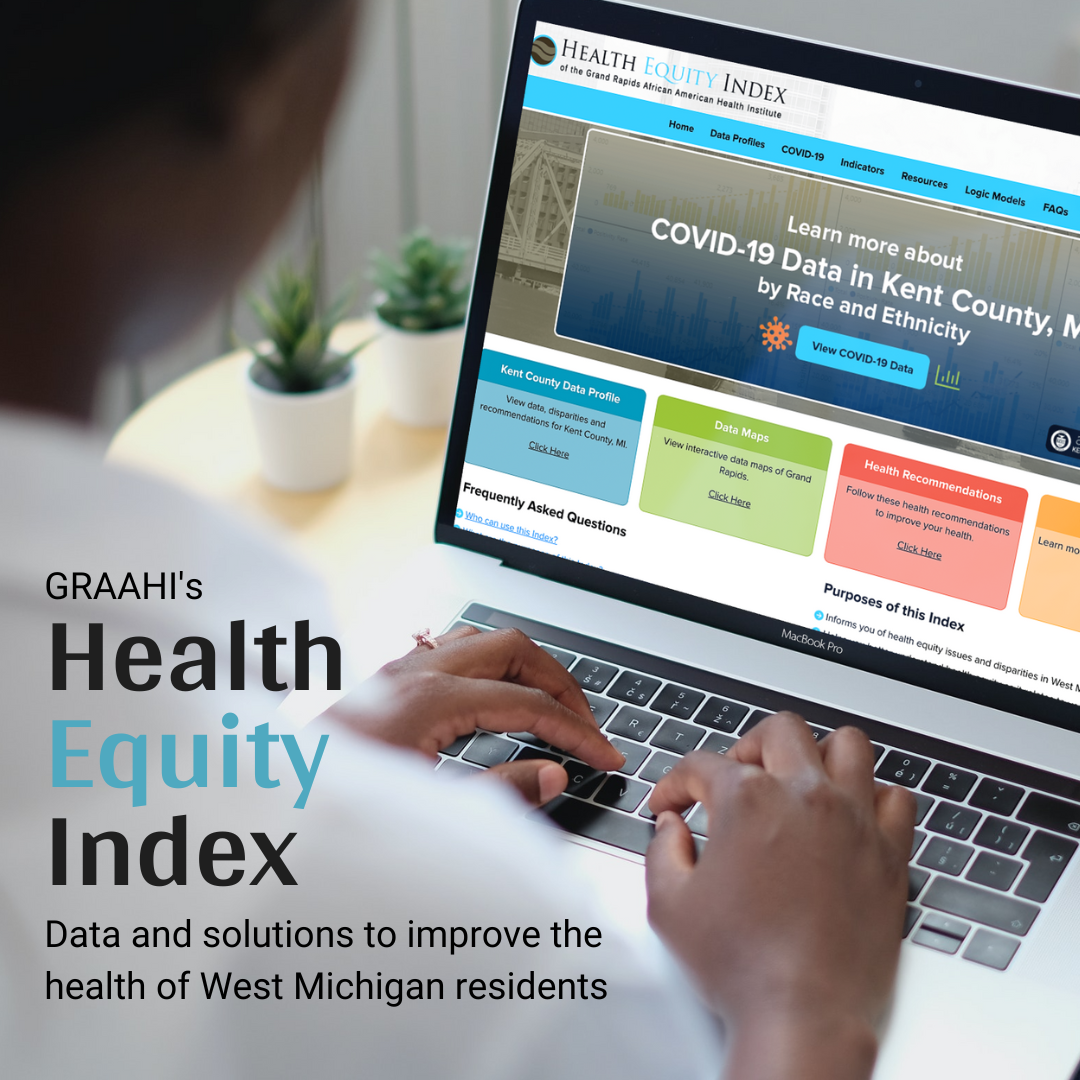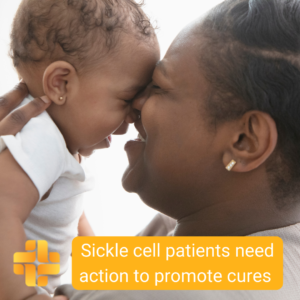SICKLE CELL DISEASE:
With proper treatment and support people with SCD can live full lives and enjoy most of the activities that other people do.

LIVING WITH SICKLE CELL DISEASE
Sickle cell disease, inherited by millions globally and impacting nearly one in 10 Black Americans, is a chronic condition where red blood cells contort into rigid, crescent shapes, causing blockages and pain throughout the body. Living with it requires resilience and proactive care. From managing frequent episodes of intense pain, called crises, to staying hydrated and monitoring for infections, it’s a constant dance between managing symptoms and prioritizing overall health. But amidst the challenges, there’s hope. Early diagnosis, regular check-ups, and access to pain management specialists can significantly improve quality of life. Additionally, groundbreaking gene therapy research offers the potential for a cure in the future. Living with sickle cell disease is about finding strength in community, embracing preventative measures, and staying informed about the latest advancements. It’s a journey paved with both obstacles and triumphs, but ultimately, it’s about cherishing life and making the most of every healthy moment.
Remember, while sickle cell disease presents significant challenges, it’s important to focus on the positive aspects of living with the condition, such as the strong community support and the ongoing research advancements offering hope for a cure. It’s also crucial to avoid mentioning sensitive topics like mortality rates or specific pain descriptions. By emphasizing proactive health management and the potential for a brighter future, you can create an informative and empowering paragraph about living with sickle cell disease.

Nutrition
Fueling with a nutrient-rich diet is a powerful tool for managing sickle cell symptoms and enhancing overall wellbeing.

Exercise
While once discouraged, moderate, supervised exercise has emerged as a safe and valuable ally in strengthening muscles, boosting heart health, and improving quality of life in sickle cell disease.

Mental Health
Addressing the emotional struggles alongside physical needs through mental health support is crucial for optimizing well-being and navigating the challenges of sickle cell disease.
NUTRITION
Fueling with a nutrient-rich diet is a powerful tool for managing sickle cell symptoms and enhancing overall wellbeing.
Soul Food Goodies
Vegetables
Leafy greens (like collard greens, kale, spinach) and colorful vegetalbes (like bell peppers, carrots, and okra) can help support the immune system and promote red blood cell health
Collard Greens
- Vitamin B6
- Magnesium
Helps fight infection & converts food to energy
Okra
- Magnesium
- Folate
- Vitamin A
- B6
Converts food to energy, supports immune system, helps prevent anemia & fights infection
Carrots
- Vitamin A
Supports immune system
Sweet potatoes
- Vitamin
- B6
- Magnesium
Supports immune system, helps fight infection, converts food to energy
Black beans
- Magnesium
Converts food to energy
Baked Beans
- Selenium
Boosts immunity
Black eyed peas
- Folate
Helps prevent anemia
Sweet onions
- Quercetin
Helps decrease inflammation
Bell peppers
- Vitamin A
Supports immune system
Fruits & Nuts
Fruits are generally considered beneficial in a sickle cell diet because they are rich in essential vitamins, minerals, and antioxidants, which can help support overall health and well-being. Additionally, nuts are a good source of healthy fats, particularly monounsaturated and ployunsaturated fats, which can help reduce inflammation
Bananas
- Vitamin B6
Helps fight infection
Plantains
- Vitamin A
- B6
- Magnesium
Supports Immune system, helps fight infection, converts food to energy
Cantaloupe
- Vitamin A
Supports immune system
Pistachios
- Magnesium
- Vitamins A, B, E
- Folate
Converrts food to energy, supports immune system, helps widen blood vessels, fights infection, helps prevent anemia
Pecans
- Vitamin A, B, E
- Magnesium
- Zinc
Converts food to energy, supports immune system, helps widen blood vessels, fights infection and spurs growth and development
Walnuts
- Omega 3
- Fatty Acids
Reduces severity and frequency of pain crises
Meat
When it comes to selecting meats for a sickle cell diet, it is important to prioritize lean and high-quality protein sources (like chicken, turky, fish, and beef). Avoid PORK whenever possible!
Catfish
- Vitamin B12
- Omega-3
Helps make red blood cells, reduce severity and frequrency ofp ain crisis anti-inflammatory
Chicken
- Zinc
Spurs growth and development
Turkey
- Vitamin B6
- Selenium
Helps fight infections and boosts immunity
Beef
- Selenium
Boosts immunity
Fish - Salmon
- Vitamin B12
- Omega 3
- Fatty Acids
Helps make red blood cells, supports bone health and reduces severity and frequency of pain crisis
Fish - Tuna (Sushi)
- Vitamin B6, B12
- Slenium
- Omega 3
- Fatty Acids
Helps fight infections, helps make red blood cells, supports bone health, boosts immunity and reduces severity and frequency of pain crisis
EXERCISE
While exceeding personal limits can trigger complications, incorporating tailored, moderate exercise into their routine empowers individuals with sickle cell to improve cardiovascular health, manage pain, and boost overall well-being.
- Improved Cardiovascular Health
- Better Pain Management
- Improved Mood
- Enhanced Immune System
- Increased Energy
- Improved Cardio Vascular Health
Tailored Exercise Regimes
Mild Stage
- Walking
- Swimming
- Cycling
- Pilates
- Tai Chi
Moderate Stage
- Brisk walking
- Dancing
- Gardening
- Water aerobics
- Yoga
Severe Stage
- Gentle motion
- Stretching
- Chair yoga
- Breathing exercises
Mental Health
For individuals with sickle cell, prioritizing mental health support alongside physical management is crucial for navigating the emotional toll of chronic pain, fostering resilience, and maximizing quality of life.
Enhanced Coping Mechanisms
Improved physical health
Increased resiliance
improved relationships
enhanced self esteem
greater life satisfaction
better pain management
Complications
Sickle cell anemia can lead to a host of complications, including:
Concern | Description |
|---|---|
Stroke | Sickle cells can block blood flow to an area of the brain. Signs of stroke include seizures, weakness or numbness of the arms and legs, sudden speech difficulties, and loss of consciousness. If your child has any of these signs and symptoms, seek medical treatment immediately. A stroke can be fatal. |
Acute chest syndrome | A lung infection or sickle cells blocking blood vessels in the lungs can cause this life-threatening complication, resulting in chest pain, fever and difficulty breathing. It might require emergency medical treatment. |
Pulmonary hypertension | People with sickle cell anemia can develop high blood pressure in their lungs. This complication usually affects adults. Shortness of breath and fatigue are common symptoms of this condition, which can be fatal. |
Organ damage | Sickle cells that block blood flow to organs deprive the affected organs of blood and oxygen. In sickle cell anemia, blood is also chronically low in oxygen. This lack of oxygen-rich blood can damage nerves and organs, including kidneys, liver and spleen, and can be fatal. |
Splenic sequestration | A large number of sickle cells can get trapped in the spleen, causing it to enlarge and possibly causing belly pain on the left side of the body. This can be life-threatening. Parents of children with sickle cell anemia should learn to regularly feel their child’s spleen for enlargement. |
Blindness | Sickle cells can block tiny blood vessels that supply the eyes. Over time, this can lead to blindness. |
Leg ulcers | Sickle cell anemia can cause painful open sores on the legs. |
Gallstones | The breakdown of red blood cells produces a substance called bilirubin. A high level of bilirubin in the body can lead to gallstones. |
Priapism | In this condition, men with sickle cell anemia can have painful, long-lasting erections. Sickle cells can block the blood vessels in the penis, which can lead to impotence over time. |
Deep vein thrombosis | Sickling of red cells can cause blood clots, increasing the risk of a clot lodging in a deep vein (deep vein thrombosis) or a lung (pulmonary embolism). Either can cause serious illness or even death. |
Treatment
Management of sickle cell anemia is usually aimed at avoiding pain episodes, relieving symptoms, and preventing complications. Treatments might include medications and blood transfusions. For some children and teenagers, a stem cell transplant might cure the disease.
Medications
Hydroxyurea (Droxia, Hydrea, Siklos). Daily hydroxyurea reduces the frequency of painful crises and might reduce the need for blood transfusions and hospitalizations. But it can increase the risk of infections. Don’t take the drug if you’re pregnant.
L-glutamine oral powder (Endari). The FDA recently approved this drug for treatment of sickle cell anemia. It helps in reducing the frequency of pain crises.
Crizanlizumab (Adakveo). This drug, given by injection, can help reduce the frequency of pain crises in adults and children older than 16. Side effects can include nausea, joint pain, back pain and fever.
Voxelotor (Oxbryta). This drug is used to treat sickle cell disease in adults and children older than 12. Taken orally, this drug can lower the risk of anemia and improve blood flow throughout the body. Side effects can include headache, nausea, diarrhea, fatigue, rash and fever.
Pain-relieving medications. Your doctor might prescribe narcotics to help relieve pain during sickle cell pain crises.
Preventing Infections
Children with sickle cell anemia might receive penicillin between the ages of about 2 months old until at least age 5 years. Doing so helps prevent infections, such as pneumonia, which can be life-threatening to children with sickle cell anemia.
Adults who have sickle cell anemia might need to take penicillin throughout their lives if they’ve had pneumonia or surgery to remove the spleen.
Childhood vaccinations are important for preventing disease in all children. They’re even more important for children with sickle cell anemia because their infections can be severe.
Your child’s doctor should ensure that your child receives all the recommended childhood vaccinations, as well as vaccines against pneumonia, meningitis, hepatitis B and an annual flu shot. Vaccines are also important for adults with sickle cell anemia.
During the COVID 19 pandemic, people with sickle cell anemia should take extra precautions, such as staying isolated at home as much as possible and for those who are eligible, getting vaccinated.
Surgical + Other Procedures
Blood transfusions. These are used to treat and prevent complications, such as stroke, in people with sickle cell disease.
In a red blood cell transfusion, red blood cells are removed from a supply of donated blood, then given through a vein to a person with sickle cell anemia. This increases the number of normal red blood cells, which helps reduce symptoms and complications.
Risks include an immune response to the donor blood, which can make it hard to find future donors; infection; and excess iron buildup in your body. Because excess iron can damage your heart, liver, and other organs, you might need treatment to reduce iron levels if you undergo regular transfusions.
Stem cell transplant. Also known as bone marrow transplant, this procedure involves replacing bone marrow affected by sickle cell anemia with healthy bone marrow from a donor. The procedure usually uses a matched donor, such as a sibling, who doesn’t have sickle cell anemia.
Because of the risks associated with a bone marrow transplant, including death, the procedure is recommended only for people, usually children, who have significant symptoms and complications of sickle cell anemia. A stem cell transplant is the only known cure for sickle cell anemia.
Clinical trials are ongoing to address stem cell transplantation in adults and gene therapies.
Resources
Links, Tools, Resources:
https://www.sicklecelldisease.org
https://www.sicklecellsociety.org/category/real-lives-blog/
Grand Rapids/Kent County/Michigan Resources:
https://www.michigan.gov/mdhhs/adult-child-serv/childrenfamilies/hereditary/genomics/rush
Latest News and Breakthroughs
https://www.ncbi.nlm.nih.gov/pmc/articles/PMC7252227/
https://www.nhlbi.nih.gov/news/2022/researchers-study-new-way-treat-sickle-cell-disease
https://www.cuimc.columbia.edu/news/experimental-gene-therapy-reverses-sickle-cell-disease-years
Other Relevant Information:
https://sicklecellanemianews.com/sickle-cell-anemia-and-fatigue/
http://www.columbia.edu/cu/bb/sickle.html
https://www.cdc.gov/ncbddd/sicklecell/features/stories-of-sickle-cell.html
News and Articles
Table of Contents
Living With Sickle Cell
Lorem ipsum dolor sit amet, consectetur adipiscing elit. Ut elit tellus, luctus nec ullamcorper mattis, pulvinar dapibus leo.
Learn More >>
Lorem ipsum dolor sit amet, consectetur adipiscing elit. Ut elit tellus, luctus nec ullamcorper mattis, pulvinar dapibus leo.



Lorem ipsum dolor sit amet, consectetur adipiscing elit. Ut elit tellus, luctus nec ullamcorper mattis, pulvinar dapibus leo.
Lorem ipsum dolor sit amet, consectetur adipiscing elit. Ut elit tellus, luctus nec ullamcorper mattis, pulvinar dapibus leo.
Nutrition
- Lorem ipsum dolor sit amet, consectetur adipiscing elit. Ut elit tellus, luctus nec ullamcorper mattis, pulvinar dapibus leo.
- Lorem ipsum dolor sit amet, consectetur adipiscing elit. Ut elit tellus, luctus nec ullamcorper mattis, pulvinar dapibus leo.
- Lorem ipsum dolor sit amet, consectetur adipiscing elit. Ut elit tellus, luctus nec ullamcorper mattis, pulvinar dapibus leo.
- Lorem ipsum dolor sit amet, consectetur adipiscing elit. Ut elit tellus, luctus nec ullamcorper mattis, pulvinar dapibus leo.
Exercise
Benefits of Physical Exercise
Lorem ipsum dolor sit amet, consectetur adipiscing elit. Ut elit tellus, luctus nec ullamcorper mattis, pulvinar dapibus leo.
Lorem ipsum dolor sit amet, consectetur adipiscing elit. Ut elit tellus, luctus nec ullamcorper mattis, pulvinar dapibus leo.
Tailored Exercise Regimes
Mild Stage
Lorem ipsum dolor sit amet, consectetur adipiscing elit. Ut elit tellus, luctus nec ullamcorper mattis, pulvinar dapibus leo.
Moderate Stage
Lorem ipsum dolor sit amet, consectetur adipiscing elit. Ut elit tellus, luctus nec ullamcorper mattis, pulvinar dapibus leo.
Severe Stage
Lorem ipsum dolor sit amet, consectetur adipiscing elit. Ut elit tellus, luctus nec ullamcorper mattis, pulvinar dapibus leo.
Mental Health
Complications
SICKLE CELL DISEASE
Treatment advances bring hope to those with SCD
With proper treatment and support people with SCD can live full lives and enjoy most of the activities people do.








